Question
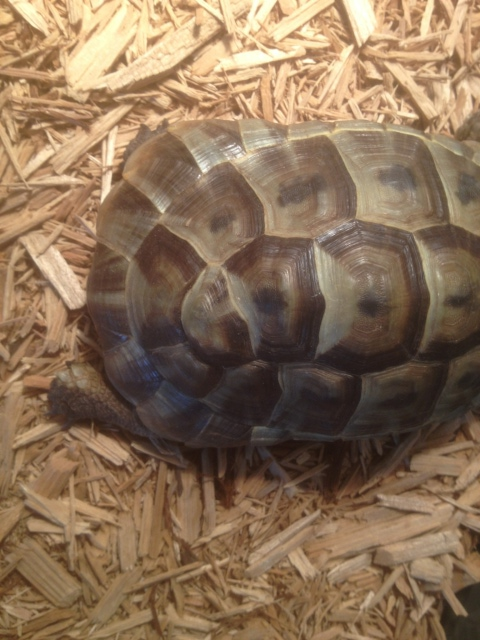 Tortoise shell 1
Tortoise shell 1 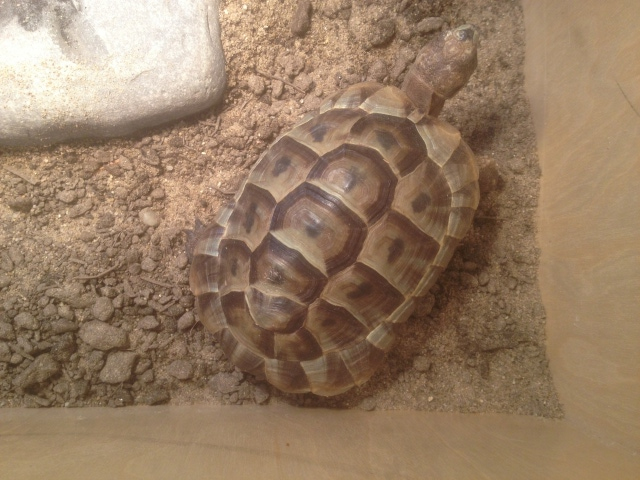 Tortoise shell 2
Tortoise shell 2
Hi Jeannie,
I recently purchased a greek tortoise from an reptile expo. I was told it was a male and about 2 1/2 years old. I am no reptile expert but noticed that his center top part of his shell (the vertebral) was curved at the back end towards his tail. I didn't think too much of it at the time as I really wanted a greek tortoise and they were the only vendor that had one (there was only 1 greek there). Besides that he seemed pretty active and alert so I bought him.
I have him at home now in a 4 x 2 tortoise table that I make with a 100 watt basking heat lamp on one side, a exo-terra 10.0 UVB light tube in the middle. So his temp range is about 90F one one side down to about 70F at the other end where his hide spot is. Half the table is a mix of sand(65%)/ top soil(35%) and half the tank reptile bedding. We soak him 2 times a week and feed him mixed greens with a calcium supplement twice a week.
Where the lower vertebral turns I have also notice a slight dip at or just above his right hip. I am attaching a few pics of what I am talking about. Im feeling now that he may have or had some MBD. I don't know. I really didn't do too much research in tortoise ailments before I bought him. I don't know if his shell will ever be able to "straighten" out in time since he is still young. Any info would be helpful.
Thank you
AnswerHi John,
From the pictures, I think your tortoise is fine; however, I'd say he's older than they said. I think what you're worried about is the normal curve of a mature male's shell (see the male in last set of pics on this page, and that's what I think you're talking about: http://www.russiantortoise.net/male_female.htm). Based on that, he's probably more like 5+ years old (a 2 1/2 year old would really be too small to sex, unless it grew very quickly). I don't see any glaring shell abnormalities, and in fact he looks very nice.
A couple of suggestions about his enclosure--if at all possible, I'd provide him with more room. If you can build him an outdoor pen for the summer, 4 x 2 is OK for winter, but it's really too small for all year round. I'm not sure what the reptile bedding is, but I would replace it with either the sand/soil mix or a sand/coir mix. I'd do a 50/50 mix (I use coir/playsand), and keep it slightly damp. Many sites will tell you to keep them very dry, but if you do that you are going to have problems with dehydration, and that can lead to bladder stones. In the wild, they preserve moisture by burrowing, but in captivity burrowing is less accessible, so we need to provide increased humidity to compensate. If you see his urates becoming gritty, increase his soaks or up the moisture in the substrate.
I'd get rid of the ExoTerra bulb and either get a Reptisun 10.0 or, preferably, just get a ZooMed Powersun for heat/UVB. At this time, these are the only bulbs that I know for sure are worthwhile. You can get more information on UVB bulbs here: http://russiantortoise.net/uvb.htm. Unfortunately, most UVB bulbs are pretty useless. I have Powersuns in all my enclosures.
The mixed greens sounds fine. If you can get weeds at least part of the year, it's the best diet--dandelions, chicory, sow thistle, mallow, clover, hawkbit, plantain, and so forth. Sow thistles are a great favorite. An outdoor pen planted with weeds is ideal in the warmer months, so that he has an opportunity to graze and bask naturally. Rather than giving a calcium supplement, put a cuttlebone in the enclosure so he can self-regulate his calcium intake. That way, you don't have to worry about giving him too much.
If I can help further, please post back.



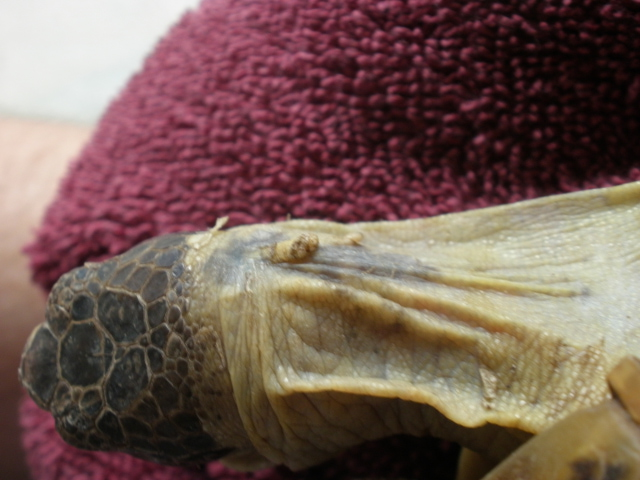 Russian Tortoise neck discoloration
Question
Neck 1 Neck 2
I have a Russian to
Russian Tortoise neck discoloration
Question
Neck 1 Neck 2
I have a Russian to
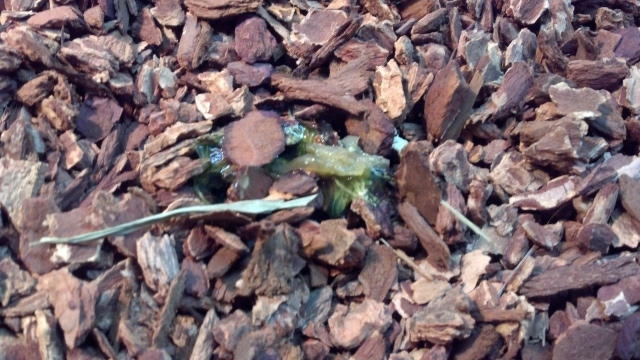 Dead tortoise
Question
Tortoise vomit? Dead tortoise
Abo
Dead tortoise
Question
Tortoise vomit? Dead tortoise
Abo
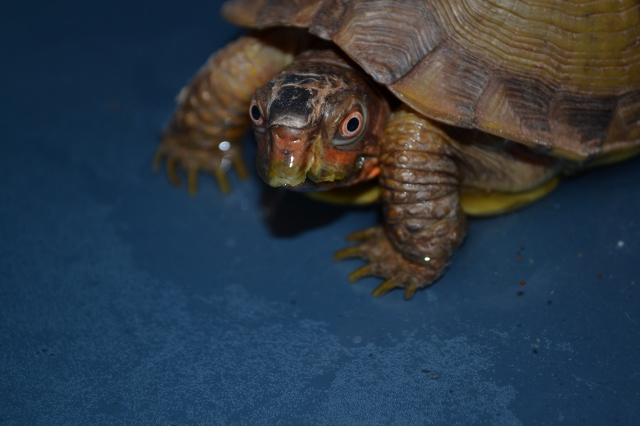 tortoise information
Question
Tortoise Tortoise
Hello! We recei
tortoise information
Question
Tortoise Tortoise
Hello! We recei
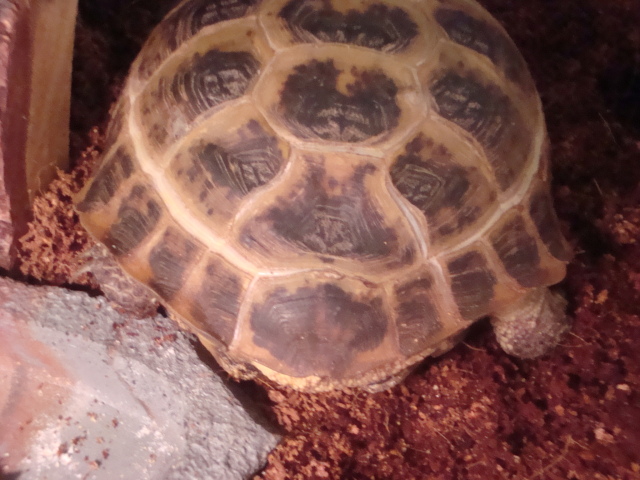 Russian Tortoise Shell Concerns
QuestionWalkers Shell
QUESTION: I have a male Ru
Russian Tortoise Shell Concerns
QuestionWalkers Shell
QUESTION: I have a male Ru
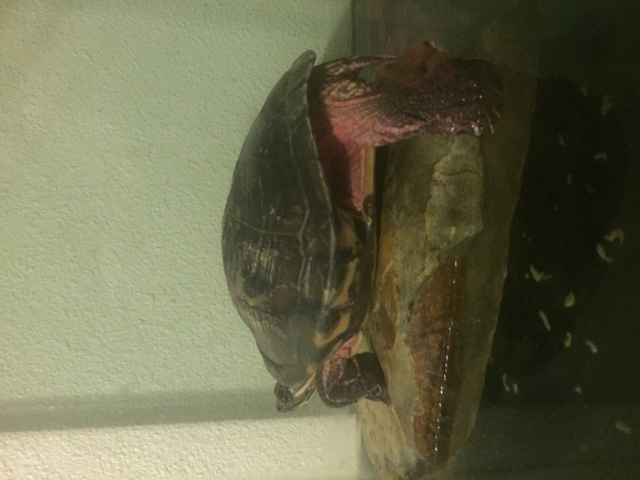 Skin infection
Question
Dudley
I think my 20 year old red ear
Skin infection
Question
Dudley
I think my 20 year old red ear